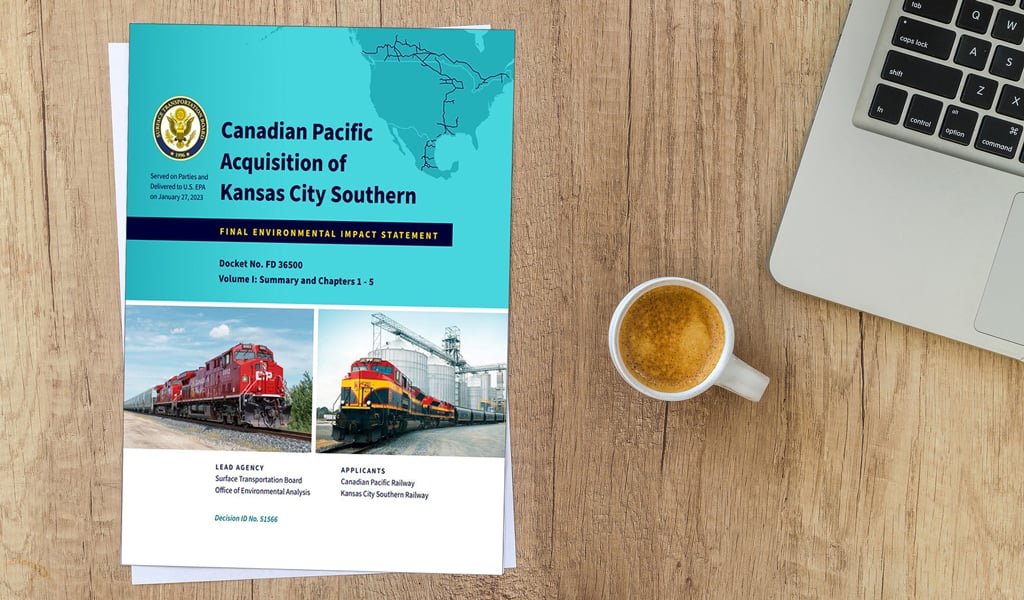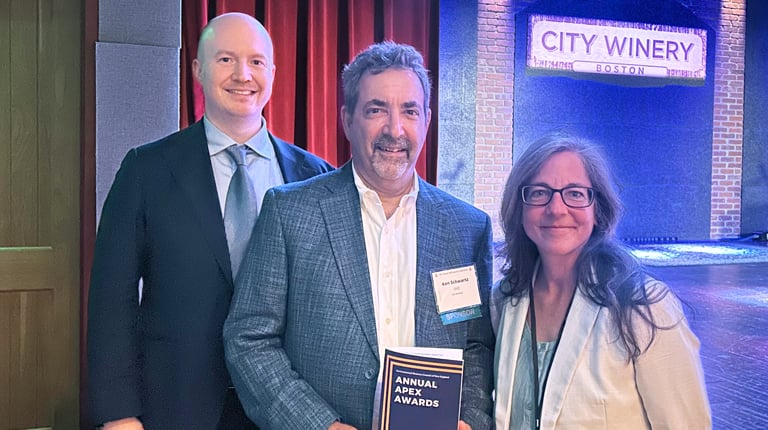
Meet Alan Summerville, VHB’s NEPA Practice Leader, a seasoned professional with more than 30 years of experience supporting agencies, applicants, trade associations, communities, and tribes as they navigate the National Environmental Policy Act (NEPA) process. He’s no stranger to litigation and has even been involved in cases that have made it all the way to the Supreme Court. With his extensive experience, Alan has a unique perspective on navigating the environmental review, permitting, and authorization process for complex, controversial, multi-billion-dollar projects and transactions, as well as rulemakings. At VHB, he helps clients manage environmental reviews under NEPA, approaching each Environmental Impact Statement (EIS) and Environmental Assessment (EA) as a process, not a document—endeavoring to achieve concise and timely outcomes for his clients.
But Alan’s knowledge doesn’t stop there—he has also provided support to the Council of Environmental Quality (CEQ), the Federal Infrastructure Permitting Steering Council, and agency workgroups for two decades. He’s even developed and delivered NEPA training for Federal agencies and was recently invited to a roundtable with CEQ to discuss the widespread challenges facing NEPA today.
With the recent signing of the Fiscal Responsibility Act of 2023, new amendments are bringing changes to the NEPA process, including enforced timeframes for completion and limited page counts. In addition, the CEQ’s proposed “Bipartisan Permitting Reform Implementation Rule” announced in July implements these amendments and provides new emphasis on climate change and environmental justice. Members of both parties in Congress are also aiming to enact further reforms.
For many years prior to these changes even coming to fruition, Alan has been delivering environmental reviews that align with the amended changes and reflect the original purpose of NEPA. We sat down with Alan to hear more about the recent NEPA amendments and solutions to streamline and manage the process.

VHB: Let’s begin by discussing the recent signing of the Fiscal Responsibility Act of 2023. Can you provide a brief overview of what this means for NEPA?
Alan: The recent amendments are focused on restoring some of the basics of NEPA that were signed into law in 1970, which is to prepare concise and timely reviews that inform decision makers and the public. This was the goal when both President Nixon and President Carter signed Executive Orders to implement NEPA prior to the announcement of CEQ’s 1978 NEPA implementation regulations.
Since its inception in the 1970s, EISs and EAs have evolved away from the original goal, often resulting in large documents with unnecessary levels of detail relative to the important impacts and that take years to finalize. The longer the document, the longer it takes consultants to prepare and review, for agencies to review, and for consultants to make revisions. In the unlikely event of litigation, it paints the target bigger for the plaintiffs and frustrates the judge’s efforts to review and understand the record.
Applicants, or project sponsors, will now have the opportunity to prepare an EIS under the supervision of the agency. Many applicants will want to take advantage of this amendment, requiring agencies to develop procedures to bring this to fruition.

VHB: You mentioned going back to the basics of NEPA. What are these basics and are they manageable?
Alan: Going back to the basics of NEPA is essential for achieving the original intent of NEPA. The 2023 amendments include enforcement of existing regulations: two years for completion of an EIS and one year for an EA, and the heads of agencies must report late reviews with an explanation. The amendments also enforce page limits: 150 pages or less for an EIS excluding appendices (300 pages for a proposed agency action of extraordinary complexity) and 75 pages or less for an EA.
The EIS page limits haven’t changed since the 1978 regulations. The only difference now is the 75-page limit for EAs, which is generous in comparison to the original 10–15-page target in the 1981 NEPA guidance. The new amendments are also generous in the time allotment for completion, which CEQ contemplated in 1981 as 12 months for the EIS process and three months or less for an EA.
It will take a concentrated effort, education, and reinforcement to shape these new habits if they weren’t already being implemented, but it is manageable. At VHB, we’ve worked on many EISs and EAs that align with the original intent of NEPA. We take a less is more approach—more pages do not always equal more defensibility.
One recent example was for the Canadian Pacific Railway and Kansas City Southern acquisition deal. VHB served as the third-party contractor for the EIS process—an evaluation of more than 1,800 miles of mainline rail operations. It was a complex process involving 25 construction projects across seven states, and massive agency consultation and public involvement efforts. We completed it in 13 months. We also completed an EA for the Sleeping Bear Dunes National Lakeshore Shoreline Stabilization within a two-month period that was under 50 pages. This fast-paced project was driven by an immediate need to protect a historic resource from shoreline retreat and loss.

VHB: What do you find are some of the primary reasons for lengthy EIS and EA processes that hinder the successful implementation of NEPA’s original purpose?
Alan: I’ve seen several reasons for lengthy EIS and EA reviews. Often, I find it has little to do with the NEPA statute and regulations and more to do with the implementation side. Some of the reasons are from the trends that have been building since the early days of NEPA. For example, the data collection, analysis, and initial writing might only take a few weeks on an EA or a few months on an EIS. However, the review loops can last for many months. The lengthy review loops are compounded when the document is unnecessarily voluminous and the participants in the process do not understand the probability of litigation and that litigation tends to focus on narrow procedural issues. In addition, many experienced NEPA practitioners, whether at an agency, law firm, or consulting firm, have retired, switched industries, or moved to another role within their organization.
It’s also challenging for agencies to hire enough people and there may be individuals filling a NEPA role who lack training, experience, and supervision. In many cases, senior agency staff, their attorneys, and decisionmakers have limited amounts of time to review EIS and EA documents, which is then compounded by documents that are hundreds and even thousands of pages long with unnecessary levels of detail relative to the important impacts. These documents may also become lengthy because it can be challenging to determine what is and is not a significant issue. Project opponents may raise controversial issues that lack scientific backing that agencies and consultants find hard to leave out of the detailed analysis.
VHB: Can you share any best practices that VHB is implementing to help reduce length and streamline the NEPA process?
Alan: EISs and EAs can sometimes impose considerable demands on time, budgets, and staffing resources if not managed effectively. Our thorough understanding of the NEPA process and regulations and its interaction with planning processes and permitting enables us to prepare NEPA reviews in a timely and efficient manner. We take the CEQ’s regulations and guidance seriously, and we’re always mindful of each agency’s unique requirements.
We leverage a comprehensive set of tools at VHB that empowers us to prepare these reviews. Right from the outset, we develop and monitor an annotated outline, which serves as a critical tool to maintain desired page limits. Additionally, we employ various tactics, including the strategic scoping out of unimportant topics, adopting rolling reviews and live editing, and implementing designated reading days to optimize the efficiency of our process.
Recognizing the significance of well-trained staff, internal training at VHB is a top priority. Our training program encompasses a wide array of pertinent topics, including topics such as the seamless integration of Section 106, 404, and 7 considerations into the EA and EIS processes, making certain that our team is well-equipped to handle any intricacies that may arise.
Our approach is anchored in thorough compliance with regulations, tailored document development, and a focus on continuous improvement through staff training and internal debriefs after EISs and EAs are complete.
If you are interested in learning more about VHB’s Approach to NEPA and Permitting, send me an email or connect with me on LinkedIn.



